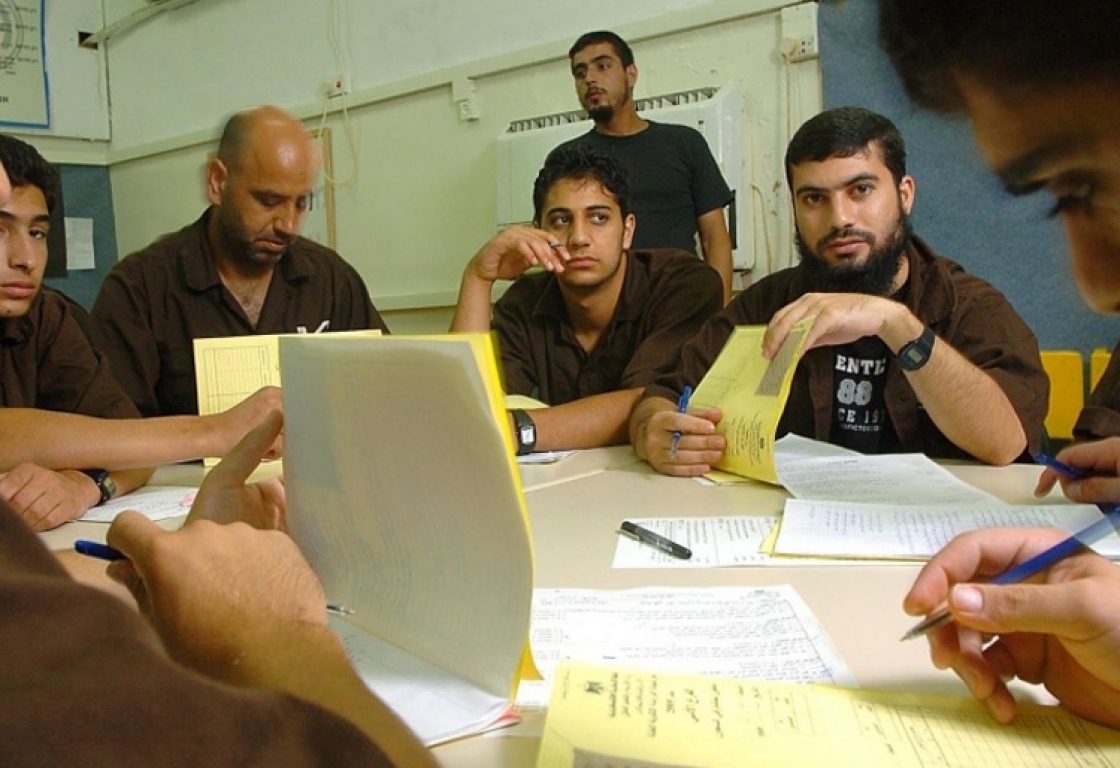The prisoners in the Israeli occupation prisons do not leave a means that confirms their steadfastness and steadfastness and makes their lives come alive without using them, so they make their own food and sweets and create their own atmosphere in the blessed month of Ramadan , in an attempt by them to live in an atmosphere similar to life outside, compensating themselves for deprivation.
Try to make the atmosphere of Ramadan!
According to what was confirmed by the editor, Muhammad al-Taj, in an interview with Al-Quds.com, the prisoners are trying to live the atmosphere of Ramadan, and to compensate themselves a little from the outside. They have close relationships.
Al-Taj says: "The prisoners try to gather joy, provide special Ramadan meals and special sweets, and do not forget their nights and times, so they prepare competitions through a general national cultural committee from all factions, and allocate prizes for them, as well as hold entertainment competitions."
According to the crown, the prisoners strive hard in worship as well, especially in the last ten days of Ramadan, and some of them allocate times for retreat, and they are keen to call the call to prayer at all times, and they warn of the approaching times of suhoor and iftar.
For his part, the editor, Louay Al-Mansi, told Al-Quds.com: “The prisoners organize evening parties in the departments, while there is an atmosphere for worship, especially Taraweeh in the rooms, and the prisoners pray noon and afternoon only in the square. Friday, gatherings are forbidden for them.” Al-Mansi points out that the current fascist occupation government does not rule out taking any measures against the prisoners, but the prisoners alone managed to force the prison administration to respond to their demands.
This is how sweets are made
The prisoners make their Ramadan sweets from scratch, and they, as the forgotten editor confirms, recycle what remains of their food, and turn them into sweets similar to the sweets abroad, such as kunafa, qatayef, float, and others.
Al-Mansi says: “Sweets in Ramadan are missing in prison. The prisoners try to produce them with what is available, and they learn to make them from each other. They make qatayef and awamah, from vermicelli, by soaking them in halal for two hours, to become a dough and fermenting them by adding (a little 7-Up or Sprite). Then they pour the qatayef into the pan and bake it, while the float is poured and fried in oil on a frying pan as well.”
As for the Qatayef filling, it is often stuffed with walnuts because it is available in the cantina, and cheese is sometimes stuffed with yellow cheese that not everyone likes. The prisoners make sweets such as harissa, basbousah and between two fires, from the semolina available in the cantina, and the prisoners also prepare milk and rice, according to what Al-Mansi explains.
Whereas, Kunafa is made from the inner filling of “fino” bread, where the bread is dried and ground, then roasted, and it becomes dough for Kunafa, and its ingredients are present to some extent in the cantina, and it is baked on gas and available tiles.
For his part, Al-Taj affirms: "The sweets are made by the prisoners, from what is available from the contents of the sweets-making siltz, so they re-make what is available, to become sweets, in an attempt to make themselves happy."
Suhoor and breakfast food.. "This story"
The supplies of some dishes are not available, so the prisoners try to provide them by collecting them from each other, or what is provided to them by the prison administration, so they recycle what is available, whether meat or some vegetables, and produce new dishes, such as mansaf or maqlouba.
Mostly, according to Al-Mansi, the prisoners’ meals in Ramadan are “dry food” because it is available, but the prisoners try to recycle what they have and reproduce it as delicious dishes at the breakfast table in Ramadan, and they may make soups from the available vegetables or “freekeh” at times, As for the juices, they are found in the “cantina.” As for the suhoor, their food is eggs, chickpeas, beans, sweetness, and simple things found in the cantina.
In turn, Al-Taj says: "The prisoners are trying to make the atmosphere of Suhoor and Iftar, so they try to prepare for it with a special budget from their allocations in the cantina, and they try to reproduce the available food provided by the prison administration, so that it becomes a new food for Ramadan."
It is noteworthy that, according to the Prisoners’ Association, the occupation forces are detaining (4,800) prisoners in (23) prisons and detention and investigation centers, including (29) female prisoners in “Damon” prison, and among the total number of prisoners are (170) children. As minors, they are imprisoned in (Ofer, Megiddo, and Damon) prisons.







Share your opinion
This is how the prisoners make their Ramadan sweets and food.. A life despite the difficulties!